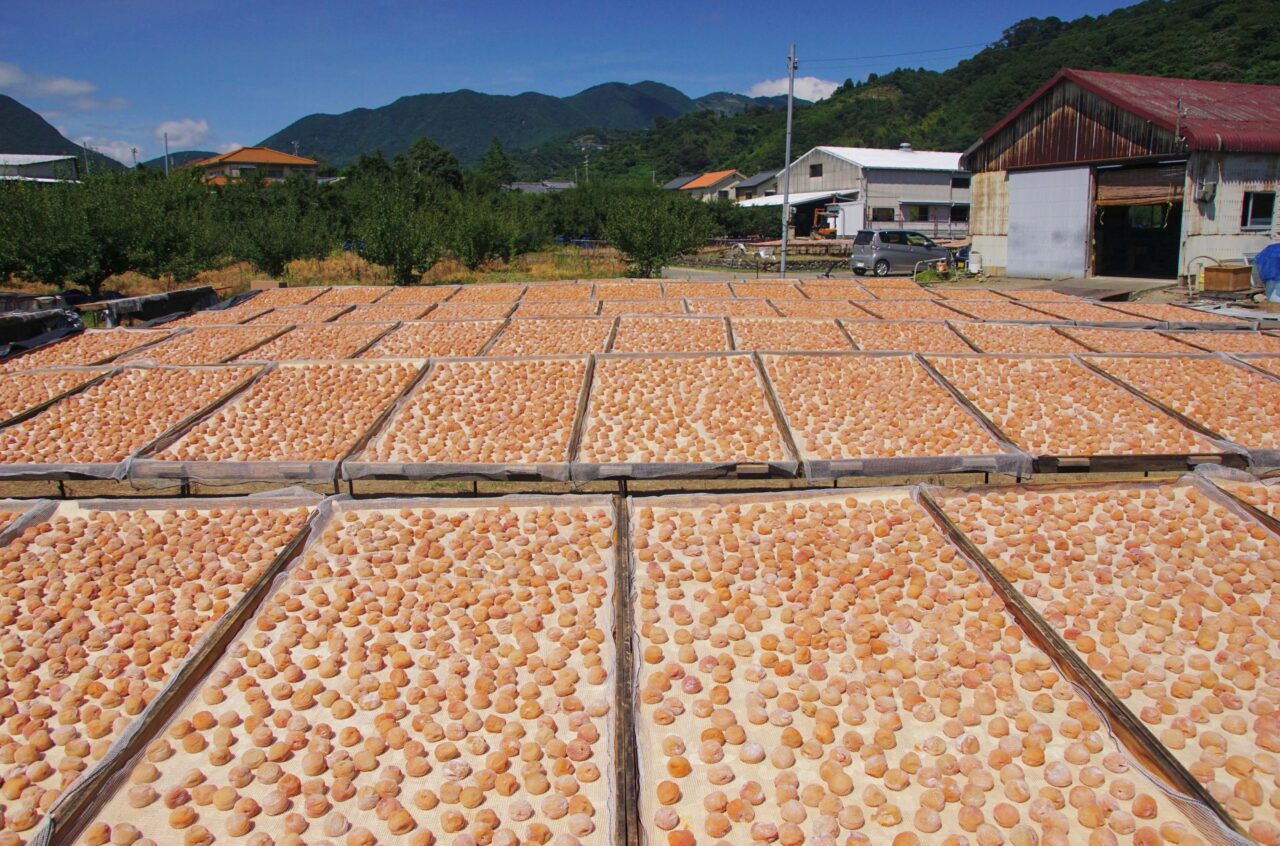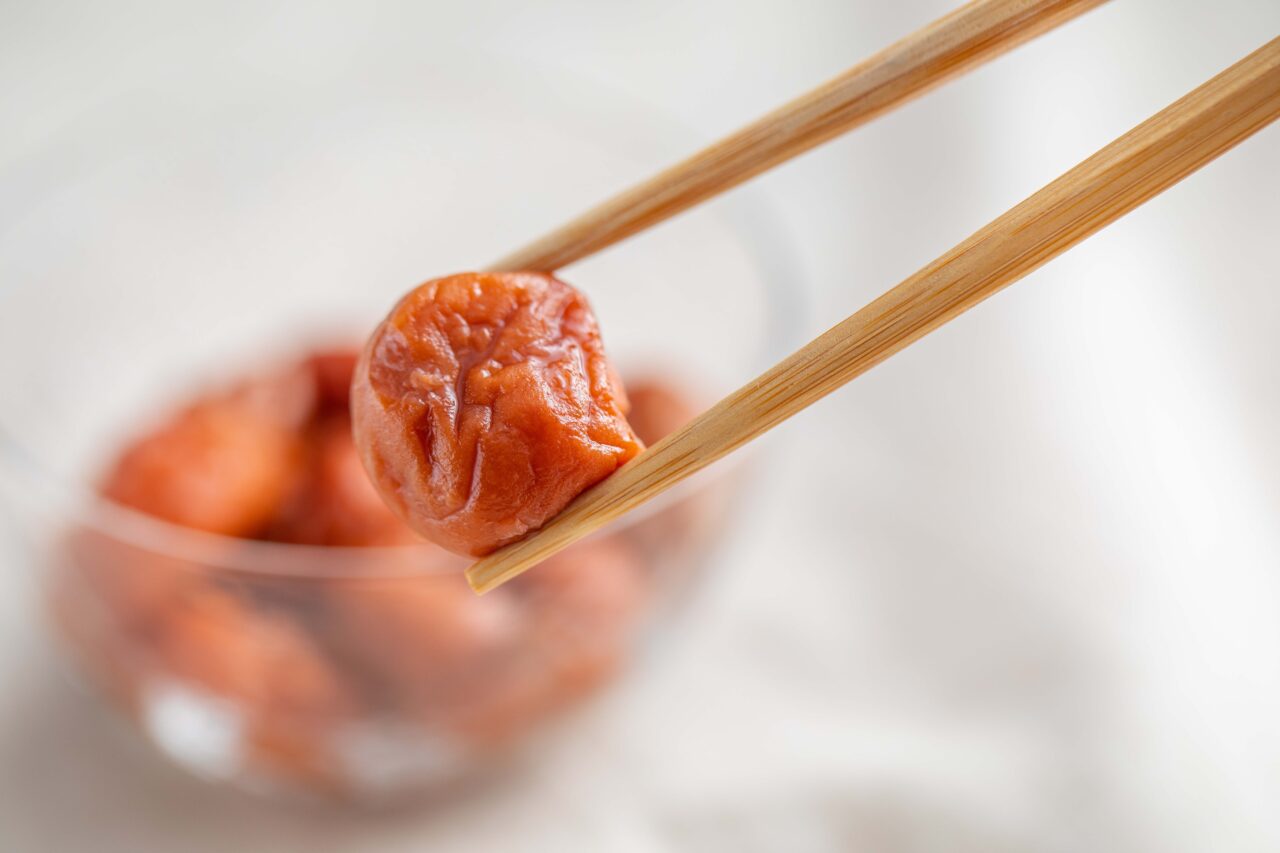60% of Japanese plums come from the Wakayama Prefecture, the largest producer of plums nationally. Plums from this region is also considered the best in Japan. For example, premium Kishu Nanko plums from the region are sizeable and plump. When pickled, a mild saltiness pervades its soft flesh and delicately balances its sour taste. It is suitable for vegetarians to enjoy.
Premium Kishu Pickled Plum Omusubi
Main Ingredients
Pickled plum (Japan), salt, sugar
Nutrition Information
| Energy (kcal) | 159 |
| Protein (g) | 2.8 |
| Fat (g) | 0.82 |
Tasting Notes


Dried Plums: a Japanese Home Staple
Pickled and sun-dried plums are a very common side dish in Japanese cuisine. The classic hinomaru bento (“sphere of the sun” lunchbox) is made with two ingredients only – white rice and a single, whole pickled plum. Resembling Japan’s national flag, the simple meal has kept the bellies of countless Japanese full and warm. According to Ishinpō, the most ancient Japanese medical text, the citric acid-filled pickled plum neutralizes toxins in food, water and blood, and has excellent antibacterial properties. During the Heian period, dried plums were considered a medicine for aristocrats and royalties, and only the upper class were to eat them to treat illnesses. As time went by, pickled plums became more widespread and popular. They came to be considered an essential seasoning and accompaniment for rice meals for the common folk when eating both outside on trips and at home.